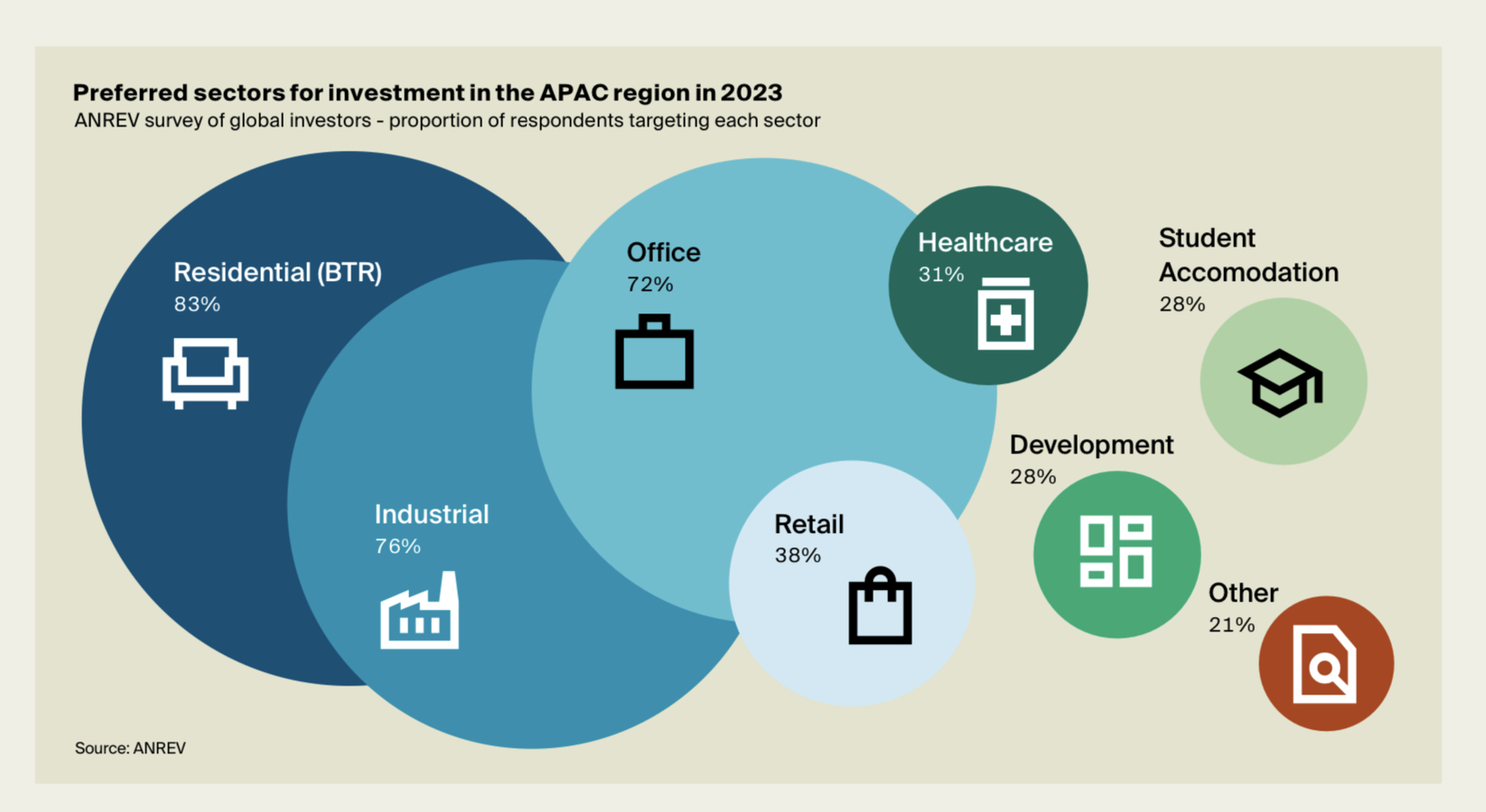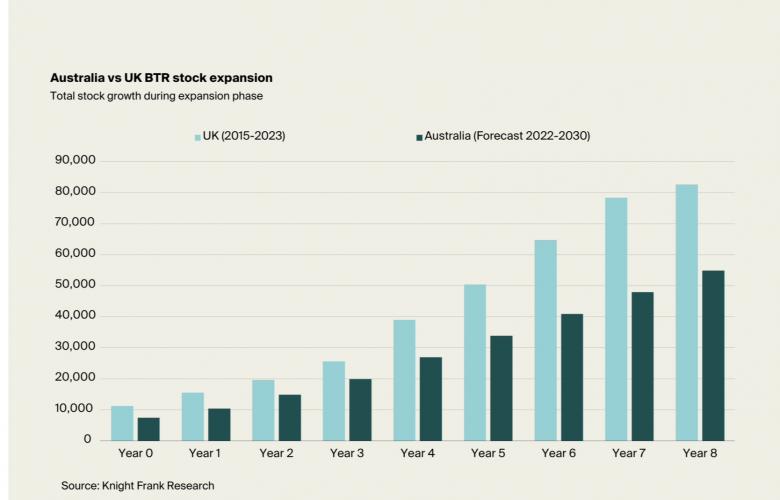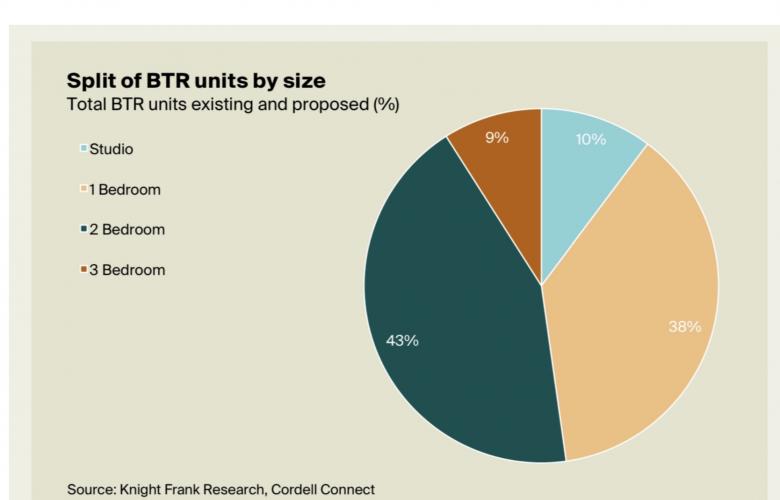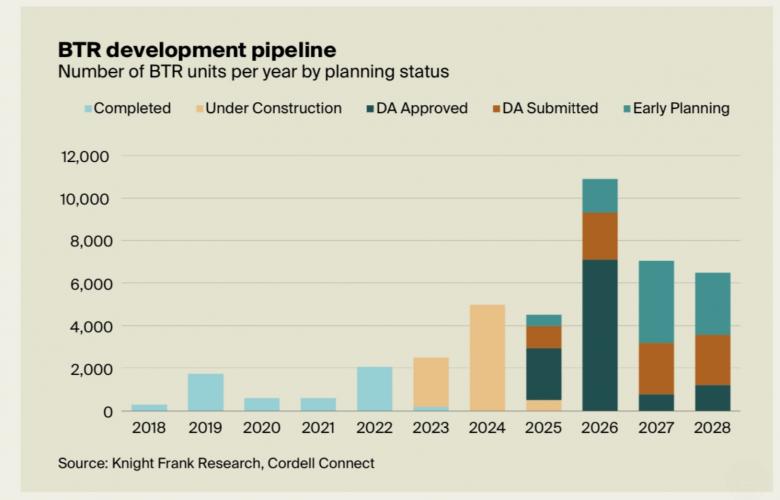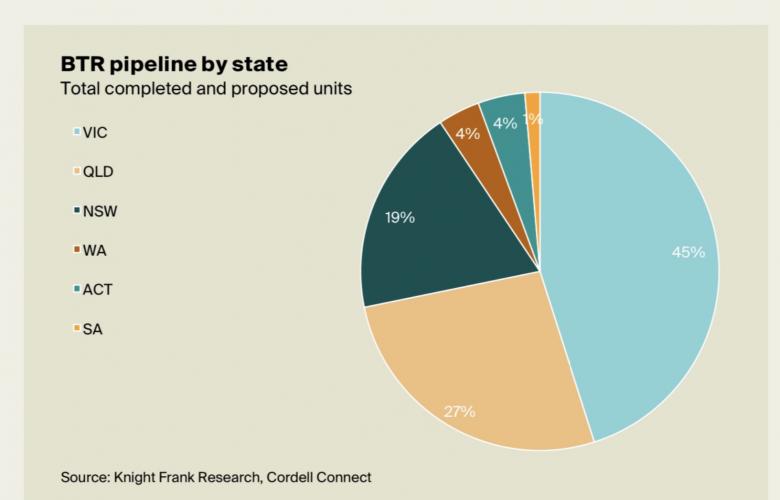BTR sector in Australia forecast to see 55,000 dedicated units by 2030
Contact
BTR sector in Australia forecast to see 55,000 dedicated units by 2030
Knight Frank Chief Economist and report author Ben Burston said after a long gestation period, the BTR sector in Australia had sprung to life and the quantum of committed and planned development was increasing fast.
The build-to-rent (BTR) sector in Australia is forecast to see around 55,000 dedicated units completed by 2030, based on the current burgeoning pipeline of developments and the demonstrated growth trajectory in the UK, according to the latest research from Knight Frank.
The real estate consultancy’s Breaking the Shackles – the rise of BTR report found that it the total BTR stock grows to 55,000, it would still only represent 1.5 per cent of the total rental supply in Australia, underlining the potential for scale.
Currently there is an estimated 8,350 dedicated BTR apartments under construction nationally (at September 2023) and a further 12,900 units are approved for development in the near term.
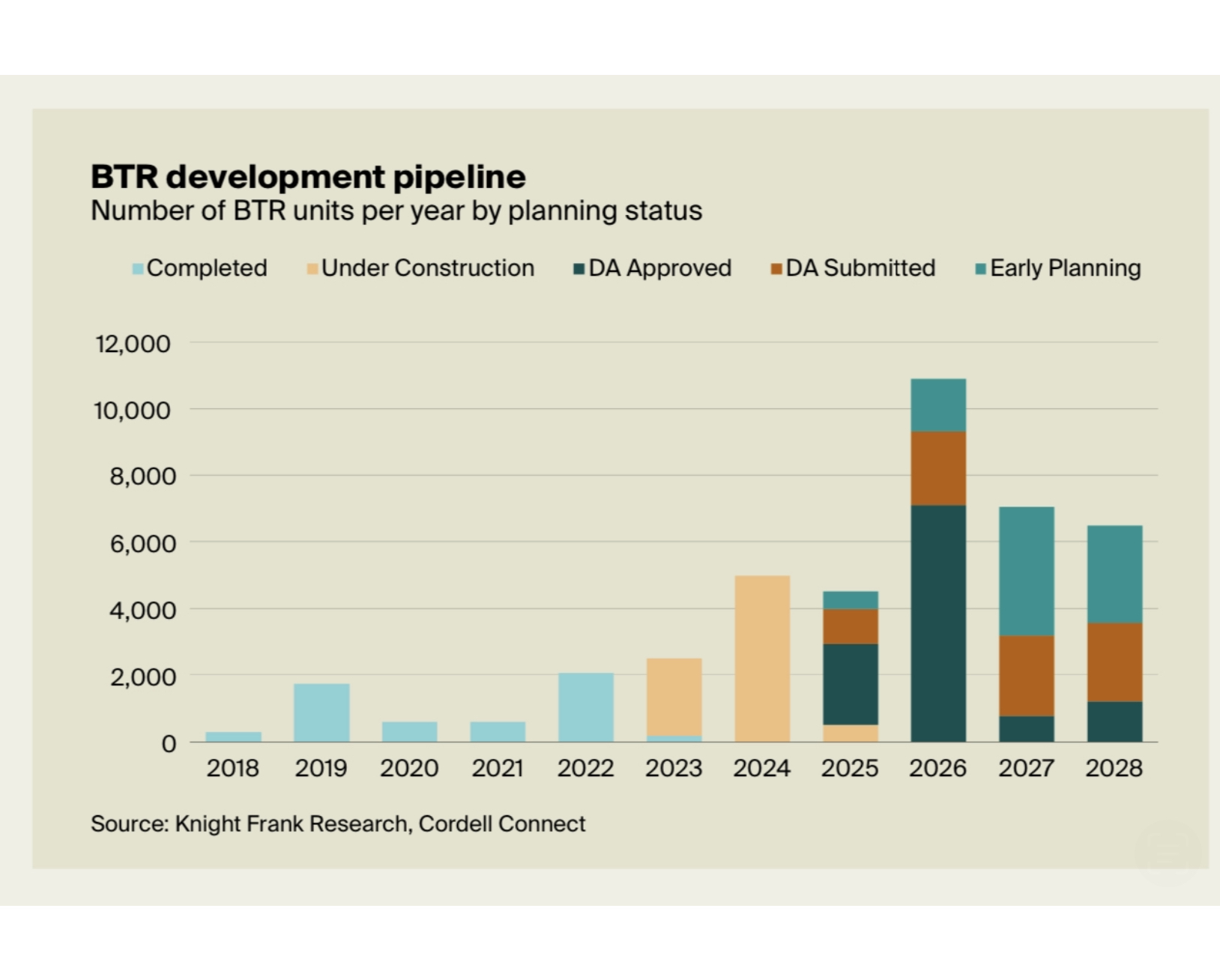
A wave of construction activity is now underway, with the pipeline is most advanced in Melbourne and Brisbane, but activity is picking up across all major cities,” he said.
“The current groundswell of activity points to a sustained expansion in total stock, and by 2030 BTR is expected to have emerged as a critical part of the housing supply mix, with Australia set to mimic the UK’s BTR journey over the past decade.
“The acceleration in development that we have seen in Australia in 2023 mirrors the beginning of the expansion phase that occurred in the UK from 2015 onwards.
“Over the following eight years to 2023, total UK stock has expanded from 11,312 to 82,636 units, reflecting average growth in the total stock of BTR units of 30 per cent per year, or 9,450 units.
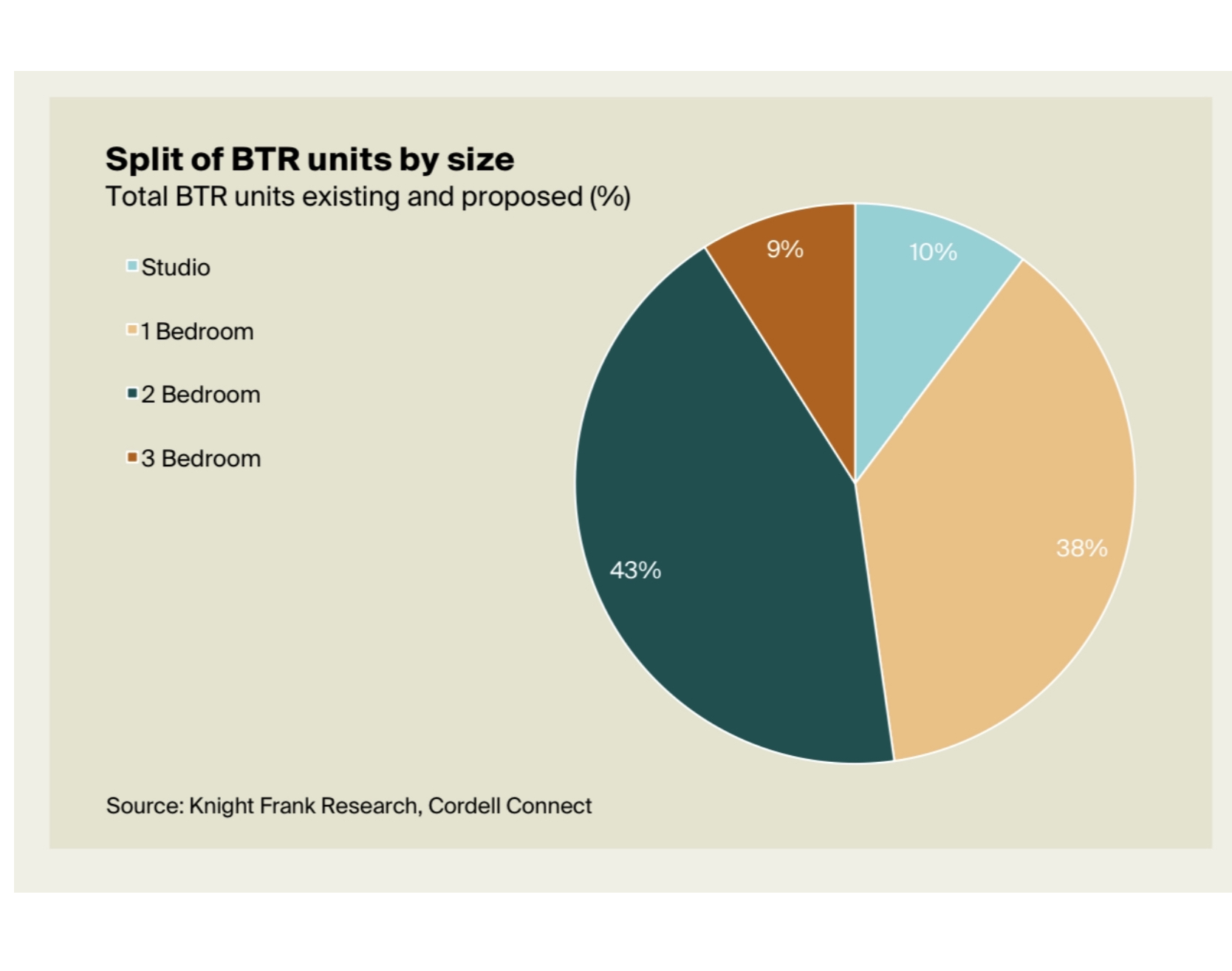
“Our forecast of 55,000 dedicated BTR units in Australia by 2030 implies an annual delivery of 5,900 units as supply accelerates from 2024 onwards.
“This is slower than the UK in terms of annual unit delivery but a similarly rapid expansion in proportionate terms.”
Mr Burston said the underlying demand-side drivers for the BTR market have been in place for some time, but a combination of cyclical and structural supply-side impediments have, until recently, held back development.
“However, many of these constraints have either abated or been removed and the sector appears set to expand rapidly over the next decade,” he said.
“Given the size of the market for rental accommodation, investors and developers are able to access a market offering the potential for large-scale capital deployment, while the community stands to benefit from a much-needed additional source of supply to help address Australia’s structural undersupply of housing.
“There is clear case for BTR to play a part in redressing the imbalance between demand and supply in the residential market, with a new model needed to facilitate faster growth in rental supply beyond the sole reliance on the existing build-to-sell model with mum and dad investors providing housing.
“The BTR model aims to align the interests of investors seeking to secure long-term income streams closely linked to inflation, with the interests of tenants, and over time this will result in a more diverse product mix that promises to improve the service offering and widen the range of options for renters.
“In coming months, the pipeline of potential development is likely to expand further as developers seek to position themselves to benefit from the current surge in rental growth, although the actual quantum of schemes under construction may be slower to accelerate until construction cost pressures ease.”
Knight Frank Head of Alternatives Tim Holtsbaum said across the globe investors were seeking greater exposure to alternative sectors, and the residential ‘living’ sectors were at the front of the queue, led by BTR.
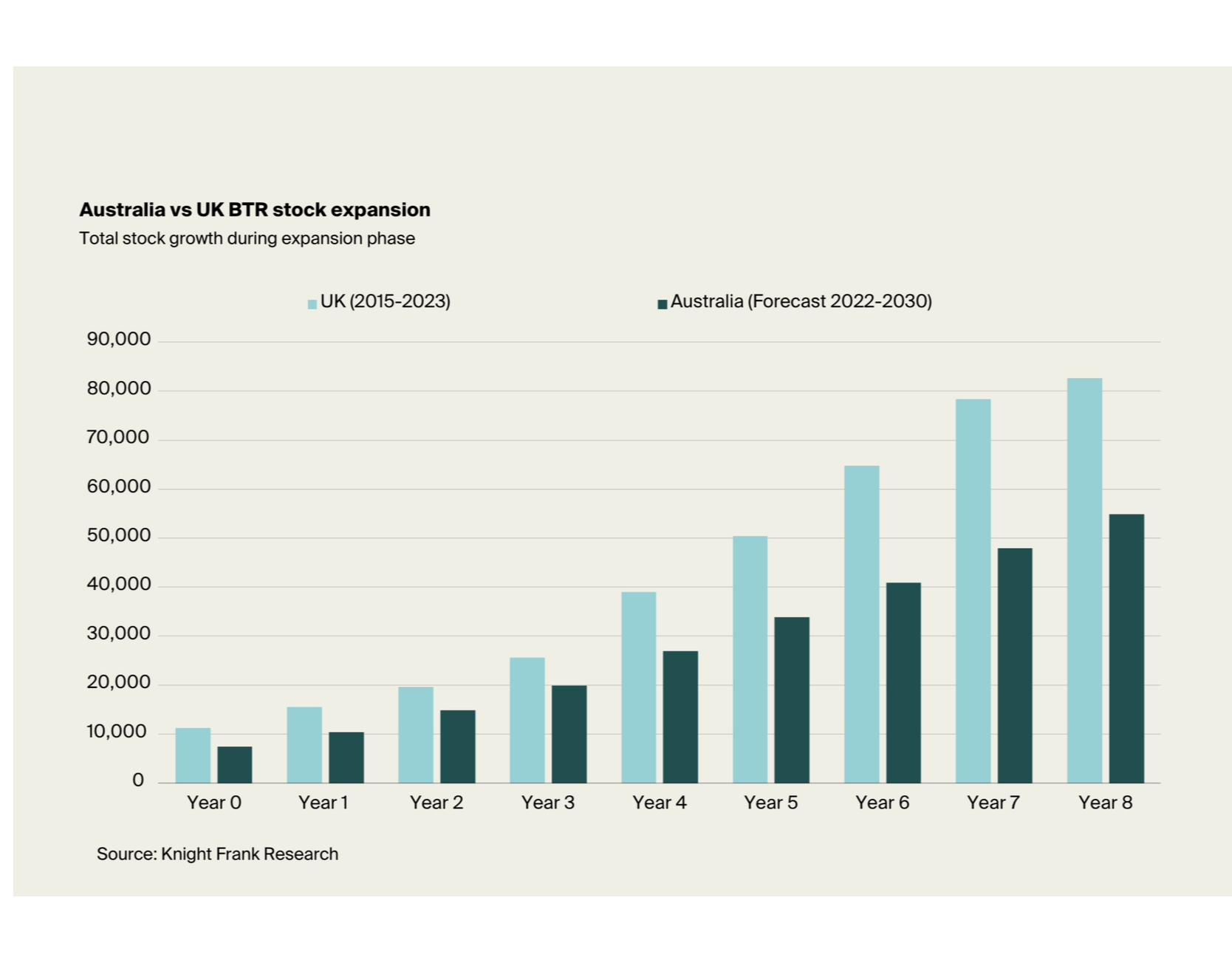
“For the first time, residential is the most sought-after sector for global investors targeting the Asia Pacific region, and Sydney and Melbourne are the preferred locations,” he said.
“Investors are gravitating toward the residential sector partly because of its defensive characteristics, specifically the ability to adjust rental income streams more quickly than other sectors in response to inflation.
“They are also assured by the relative resilience of residential rental performance during market downturns, with rents rarely falling in any major city.
“Investors are seeking out resilient markets with long-term growth potential and the lack of an established BTR sector in Australia presents an opportunity to deploy capital into build-to-core strategies with the ability to achieve significant scale over time.”
Mr Holtsbaum said: “The change in the MIT regime makes BTR immediately more viable for offshore investors and will add further impetus to the current expansion.
“However, global limited partner (LP) investors generally wish to partner with local developers as general partners (GPs) for their experience sourcing suitable sites and delivering schemes that appropriately cater to specific locations and demographic profiles.
“The presents challenges to create deal structures that align interests between parties that differ greatly in size and expertise.
“LPs are naturally attracted to large schemes which have potential to deliver greater efficiency and larger scale deployment, but these also imply the need for a large financial commitment from local developers.”
Where will BTR developments be located in Australia?
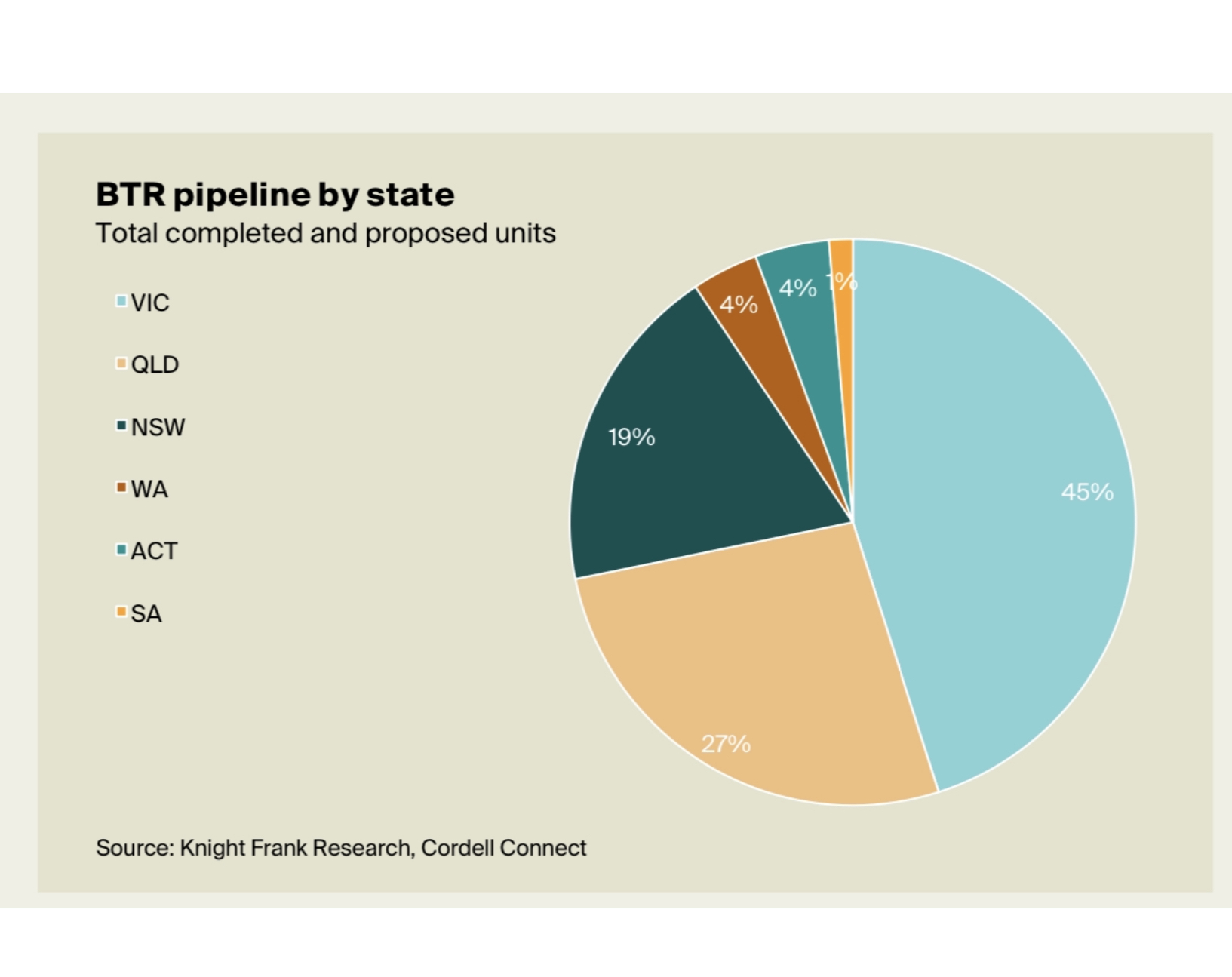
The Knight Frank research found that among the major cities, Melbourne was leading the way for BTR developments, with 4,920 apartments under construction and another 8,250 approved.
Brisbane is next with 1,743 under construction and 2,567 approved, followed by Sydney with 1,529 and 965 units respectively.
To date, development has focussed on one and two-bedroom units, representing 36 per cent and 44 per cent of overall units respectively.
Mr Holtsbaum said with attention now turning to the successful execution of a BTR strategy, location selection was increasingly in focus.
“While many think the market is largely confined to Melbourne and Sydney, cities like Perth and Canberra also seeing signs of growing interest, partly owing to relatively low land values and strong rental yields,” said Mr Holtsbaum.
“Inner fringe locations in Melbourne, Brisbane and Sydney are natural candidates for the first wave of schemes, given their offer of amenity, close proximity to CBDs and a high proportion of potential tenants given their comparatively well-educated and young populations.
“But over time we expect to see a broadening of developer interest to encompass middle-ring suburbs with high levels of amenity and connectivity.”
Click here to view and download the report.
